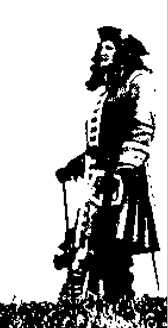The Battle of Oudenaarde was one of the biggest and most important battles in Europe during the first half of the 18th century. It is also one of the few battles of that magnitude that can be archaeologically investigated. Therefore, the town of Oudenaarde wants to give the scientific research every possible chance. Indeed, this is a pilot project that can be considered as an example for Flanders and the rest of Europe.
The care for the military heritage from before the First World War was an important reason for minister Dirk Van Mechelen to give the research project his full support. Thus, the Ename Centre for Public Archaeology and Heritage Presentation, one of the partners in the organisation of the Battle of Oudenaarde commemoration, received a subsidy (via a project initiative of VCM-Contactforum voor Erfgoedverenigingen) to document the methodology of the investigation and to make a DVD about the project.
Oudenaarde received a lot of support for the project, also from abroad. In November 2007 collaborators of the British Battlefields Trust came to Oudenaarde to explain their research methods. They use a metal detector to search for traces and remnants of the battle, such as musket bullets, buttons and other objects. By meticulously mapping these finds, we get an idea of what happened 300 years ago.
Under the supervision of the Flemish Heritage Institute amateur archaeologists will be involved in the long-term investigation. Also this is unique for Flanders.
After 300 years the landscape has changed fundamentally. For an accurate reconstruction of what the vicinity of Oudenaarde looked like in 1708, we can count on the monitoring of the historical research by the archivist of Oudenaarde’s town archives.
Researchers from the University of Ghent helped us to investigate certain places in the soil, measuring electromagnetic resistance to locate disturbances in the soil. That way graves of fallen soldiers may be located.
But especially the owners and the users of the fields and meadows surrounding Oudenaarde make this research project possible. Without their consent the Flemish authorities could not grant permission to investigate with metal detectors.



